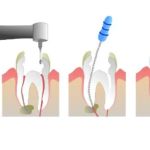How to Teach Kids Proper Oral Hygiene Habits
As a parent, one of the most important tasks you’ll face is ensuring your child develops proper oral hygiene habits. Good oral care isn't just about brushing and flossing; it’s about establishing a routine that will set your child up for a lifetime of healthy teeth and gums. Whether your child is just learning how to brush their teeth or is becoming more independent with their oral care routine, it’s crucial to teach them the correct habits from an early age. In this article, I'll guide you through the process of teaching your kids proper oral hygiene and share tips and tricks that worked for me along the way. I’ll also provide you with helpful advice on how to make this process engaging and effective.
1. Start Early: The Importance of Early Oral Care
The earlier you start teaching your child about oral hygiene, the better. For infants, oral care begins with cleaning their gums before teeth even appear. Using a soft, damp cloth or a special infant toothbrush, gently wipe your baby’s gums after feedings. This may seem like a small step, but it helps to establish the idea that oral care is important from a very young age.
As your child’s first tooth emerges, it’s time to introduce them to brushing. I remember my own experience with my child’s first tooth; I was thrilled but also concerned about how to make the process enjoyable. At first, it was all about the technique. I used a small, soft-bristled toothbrush and a tiny smear of fluoride toothpaste, ensuring the brushing was gentle. At this stage, even if your child doesn’t fully understand, they’re developing important habits that will stick with them as they grow.
2. Make Brushing Fun: Engaging Your Child
Let’s face it: Getting kids to brush their teeth can sometimes feel like pulling teeth! However, making the experience fun can help them stay engaged. For young kids, choosing a toothbrush that they love can make a huge difference. Whether it’s a toothbrush featuring their favorite cartoon character or one that lights up when brushed properly, these fun elements can excite your child about brushing. My daughter loved brushing with her princess toothbrush, and I used to let her pick out toothpaste flavors, making the whole process feel like a treat.
You can also turn brushing into a game. One technique I used is setting a timer for two minutes and having a “brushing race” to see if they could brush long enough before the timer went off. I also encouraged my child by brushing my own teeth alongside them, making it a shared activity. Positive reinforcement is key: Praise their effort and consistency, even if the brushing isn't perfect. This builds their confidence and helps them develop a habit of brushing on their own.
3. Explain the ‘Why’: Teaching the Importance of Oral Hygiene
It’s essential to explain to your child why they need to take care of their teeth. As children grow older, they start to understand the importance of oral hygiene. Instead of simply telling them to brush because you say so, help them understand that brushing prevents cavities, keeps their breath fresh, and helps them avoid trips to the dentist. My son was always curious about why I insisted on brushing twice a day, so I made it a point to show him pictures of healthy teeth versus teeth with cavities. This visual comparison helped him connect the idea of brushing with having a bright, healthy smile.
As they get older, children may even start asking about the sugar they consume and how it affects their teeth. This is a perfect opportunity to explain how sugary snacks can cause tooth decay and the importance of limiting sweets. Encourage healthy snacks like fruits and vegetables, and show them how good oral care can protect their teeth from cavities.
4. The Role of Flossing: Introducing Flossing to Kids
Flossing is a crucial part of maintaining oral hygiene, but getting kids to floss can be a challenge. Typically, I recommend introducing flossing around the age of 6 or 7, when children have developed enough dexterity to manage the floss on their own. Before that, you can floss for them, showing them how to gently slide the floss between their teeth to remove food particles and plaque.
To make flossing easier and more fun, consider using floss picks designed for kids. These are smaller and easier for little hands to handle. Also, make sure to teach them the right technique: gently glide the floss between the teeth and avoid snapping it down, which can cause injury to the gums. When I introduced flossing to my daughter, she initially resisted, but by making it a routine after brushing, she eventually got the hang of it. I also demonstrated flossing alongside her to make it a shared experience.
5. Set a Routine: Consistency is Key
One of the most important factors in ensuring that your child develops good oral hygiene habits is consistency. Make brushing and flossing a regular part of your child’s daily routine. I found that brushing in the morning before school and again before bed worked best for my children. Setting a consistent time for both activities helps them establish the habit of brushing regularly.
To make it even easier, I used a chart with stickers where each day they could mark off after brushing. This not only reinforced the habit but also made it feel like a fun challenge. If they forgot to brush, I would kindly remind them, but I always made sure to praise them when they did it on their own. Positive reinforcement and creating a set routine will eventually make oral hygiene a seamless part of their daily life.
6. Visit the Dentist Regularly: Make It a Positive Experience
In addition to teaching your child how to care for their teeth at home, regular visits to the dentist are a key part of maintaining good oral health. When I first took my kids to the dentist, I was worried they might be scared, but I made sure to explain the visit beforehand and keep the tone light and positive. I told them the dentist was there to help keep their teeth healthy, and I let them know what to expect during the appointment. If your child is nervous, consider looking for a pediatric dentist who specializes in working with children.
By making dentist visits routine and positive, children are less likely to develop a fear of the dentist. I’ve found that children who have had positive dental experiences are more likely to take care of their teeth and feel comfortable with regular dental visits as they grow older.
By incorporating these tips into your child’s daily routine, you can help them establish good oral hygiene habits that will last a lifetime. It’s all about making oral care fun, teaching the importance of it, and setting a consistent routine. The earlier you start, the easier it will be for your child to develop these lifelong habits.
For more information on dental care for children or to schedule a visit with a pediatric dentist, check out Dentistry Toothtruth. Their professional team can guide you through every step of caring for your child’s oral health.







 Hutchinson Metro Dental4.0 (2685 review)
Hutchinson Metro Dental4.0 (2685 review) Emerson Family Dental5.0 (273 review)
Emerson Family Dental5.0 (273 review) Mundelein Dental Center3.0 (8 review)
Mundelein Dental Center3.0 (8 review) Sunnyvale Pediatric Dentistry and Orthodontics4.0 (365 review)
Sunnyvale Pediatric Dentistry and Orthodontics4.0 (365 review) Great Smiles Dental Care4.0 (472 review)
Great Smiles Dental Care4.0 (472 review) Larchmont Family Dental5.0 (532 review)
Larchmont Family Dental5.0 (532 review) The Importance of Oral Health Education During Pregnancy for a Healthy Pregnancy
The Importance of Oral Health Education During Pregnancy for a Healthy Pregnancy Best Tips for Brushing Your Teeth Properly for Healthy Gums: Essential Techniques for Oral Health
Best Tips for Brushing Your Teeth Properly for Healthy Gums: Essential Techniques for Oral Health Why Skipping Dental Checkups Can Lead to Bigger Oral Health Problems
Why Skipping Dental Checkups Can Lead to Bigger Oral Health Problems Advantages of Porcelain Dental Restorations
Advantages of Porcelain Dental Restorations How Can Diabetes Cause Tooth and Gum Problems? Preventing and Managing Oral Health Issues
How Can Diabetes Cause Tooth and Gum Problems? Preventing and Managing Oral Health Issues Healthy Habits for Promoting Good Oral Health and Hygiene: Tips for a Healthy Smile
Healthy Habits for Promoting Good Oral Health and Hygiene: Tips for a Healthy Smile